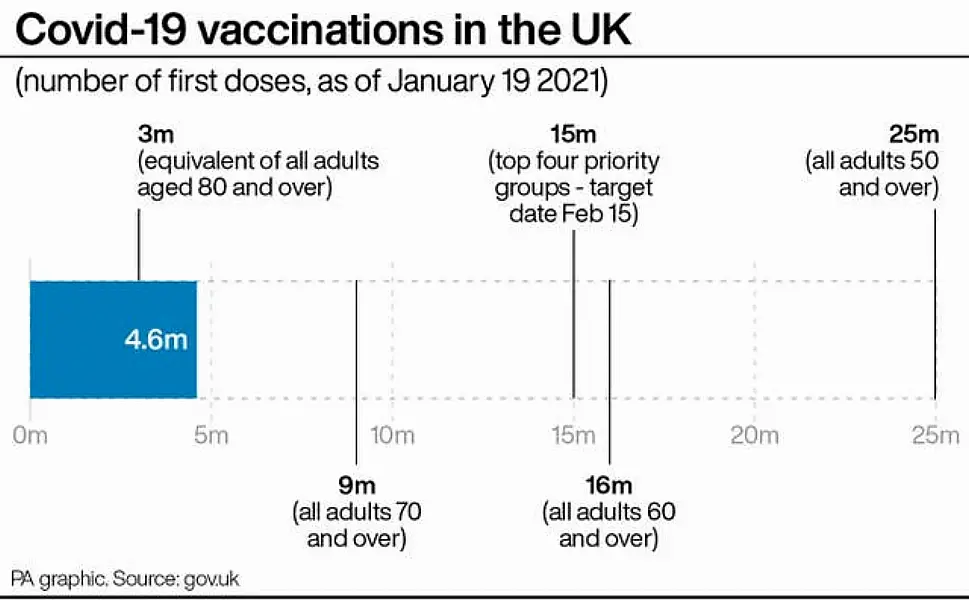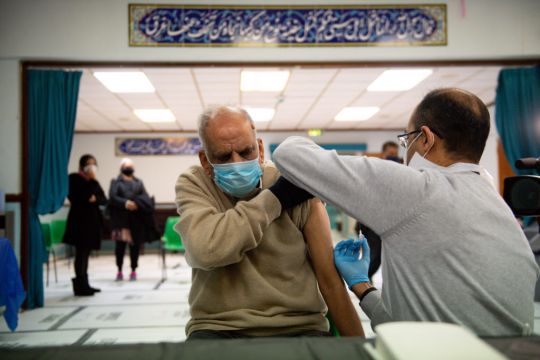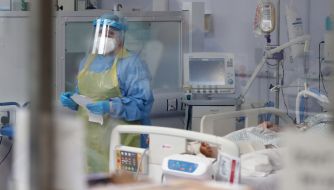The NHS is vaccinating people against Covid-19 at the rate of 200 jabs every minute in the UK, Matt Hancock has said.
The health secretary told MPs the UK has now given more than five million doses of coronavirus vaccines to 4.6 million people.
This is almost equivalent to the Irish population, which comprises some five million people. However, the UK population consists of some 67 million people.
“This virus is a lethal threat to us all and, as we respond through this huge endeavour (to vaccinate), let’s all take comfort in the fact we’re giving 200 vaccinations every minute,” Mr Hancock said.
“In the meantime, everyone must follow the rules to protect the NHS and save lives, and we can do that safe in the knowledge that the tide will turn and that, with science, we will prevail.”

Mr Hancock told MPs that 63 per cent of care home residents have now been inoculated, and said early indications are that Covid-19 vaccines can deal with some of the newer variants of the virus.
In response to a question from shadow health secretary Jonathan Ashworth on the South African variant which may pose a reinfection risk, Mr Hancock said: “Obviously we are vigilant to this and keep this under close review.
“I’m glad to say that the early indications are that the new variant is dealt with by the vaccine just as much as the old variant, but of course we are vigilant to the new variants that we’re seeing overseas.”

It came as experts tracking the spread of Covid-19 in England said infections may have gone up at the beginning of the current lockdown.
Professor Paul Elliot, who is leading the React study at Imperial College London, suggested the current measures may not be strict enough to see a drop in infections and the reproductive rate – the R.
The study involving 143,000 people, who were randomly selected, looked at the prevalence of coronavirus including in people without symptoms.
Infections from January 6th to 15th were 50 per cent higher than in early December, the study found.
Prof Elliott told BBC Radio 4’s Today programme that the current R rate – which represents how many people an infected person will pass the virus on to – is “around 1”.
He added: “We’re in a position where the levels are high and are not falling now within the period of this current lockdown.”

Steven Riley, professor of infectious disease dynamics at Imperial, told Times Radio the study had examined a long enough time period to assess the current lockdown.
“It’s long enough that, were the lockdown working effectively, we would certainly have hoped to have seen a decline,” he said.
He said data from previous lockdowns did show a fall, adding that the current research “certainly doesn’t support the conclusion that lockdown is working”.
On what he expects will happen in the current lockdown, he said: “We would expect a similar plateau, a very gradual increase (of infections), if behaviour stays the same and, if our interpretation is correct, if what we are seeing is kind of the result of the post-Christmas period behaviour.”
Government data shows that the number of new cases of Covid-19 per head of population has been falling in all regions of England.
For example, in London, the rolling seven-day rate as of January 15th stood at 703.7 cases per 100,000 people – down from 1,053.4 a week earlier, and the lowest since the seven days to December 19th.
The government said the React study does not yet take full account of the current lockdown measures.
In the study, swab tests suggested 1.58 per cent of all people had the virus in early January, up from 0.91 per cent in December.

London had the highest level in the January period at 2.8 per cent, up from 1.21 per cent in early December.
Mobility data in the study, carried out with Ipsos Mori, suggests movement decreased at the end of December, coinciding with Christmas, and increased at the start of January.







